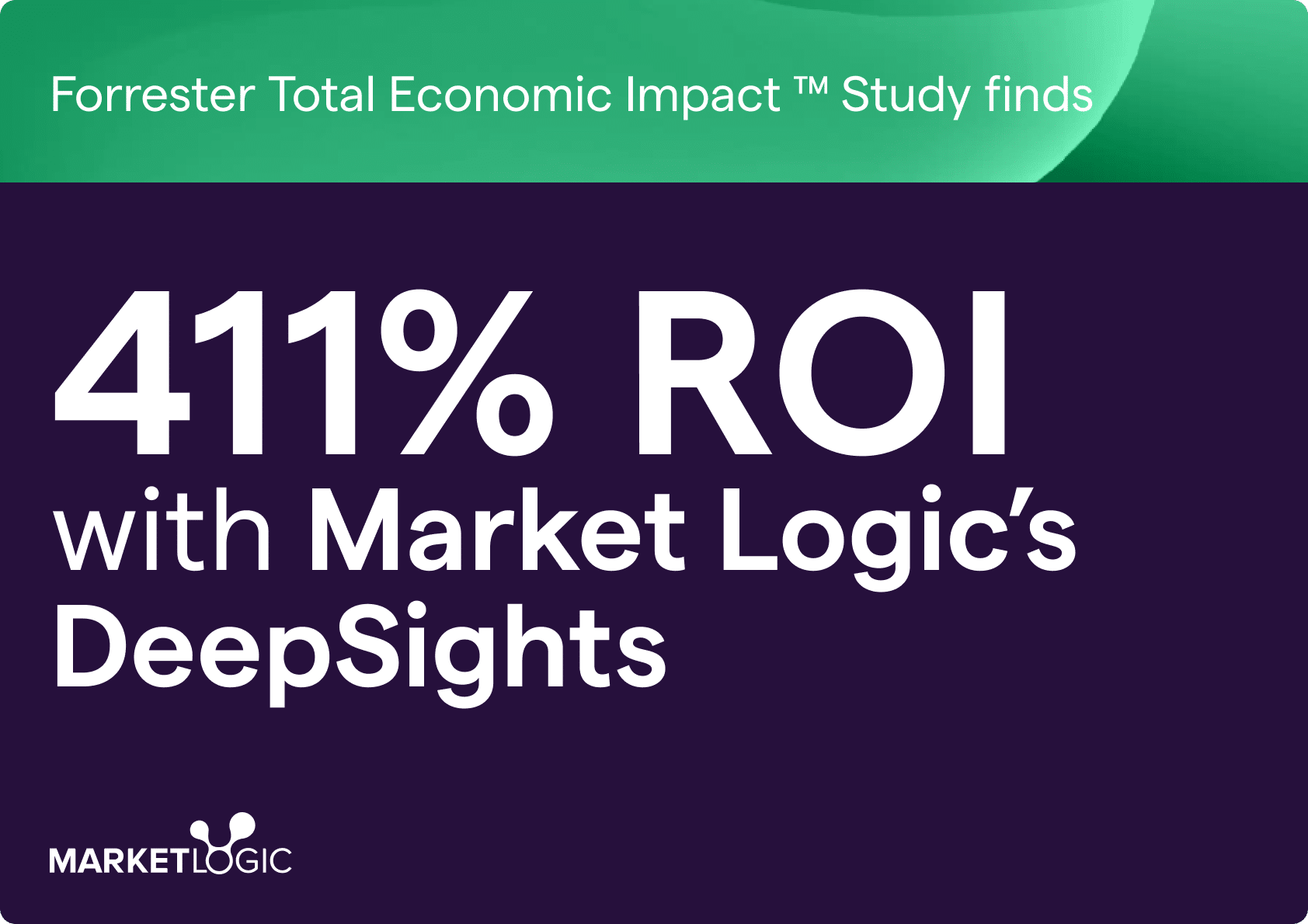What is a “market insight” – a definition
A “market insight” is the result of a deep understanding of a market and its components that businesses can use to make smart decisions and drive growth. Market insights are typically uncovered through research and data analysis, and they reveal sometimes hidden or difficult-to-see, quick-moving truths about the market. Intelligent businesses seek out and use these truths to make informed decisions that benefit their business.
Keep in mind that market insights are not just about collecting data, but are also the result of transforming data and information into actionable intelligence that drives strategic decision-making, innovation, customer satisfaction, and competitive advantage.
Why are market insights important?

If your organization doesn’t value knowledge sharing, it can create resistance to ideas and barriers to innovation within your enterprise. On the other hand, when organizations value and promote a knowledge sharing culture, they’re more competitive and innovative. For example, small or large organizations with more intensive knowledge sharing and knowledge management processes are relatively more competitive than their counterparts.[1] The thing is, knowledge sharing is important because knowledge is akin to insight, and when insights are shared in your organization, it promotes insights-driven decisions that promote growth.
Market insights are crucial for driving a business forward for several reasons:
- Informed decision-making: Market insights provide valuable information about consumer behaviors, preferences, and trends. This knowledge is essential for making informed decisions about product development, marketing strategies, pricing, and more.
- Competitive advantage: Understanding the market better than competitors can offer a significant edge. Insights can reveal gaps in the market, emerging trends, or areas where competitors are underperforming, allowing businesses to capitalize on these opportunities.
- Customer understanding: Insights help businesses understand their customers more profoundly. This understanding can lead to improved customer experiences, more targeted marketing, and products or services that better meet customer needs.
- Risk management: Insights enable businesses to anticipate and respond to market changes and challenges, reducing risks associated with new product launches, market-entry, and other strategic moves.
- Innovation and growth: Insights can spark innovation by highlighting new market opportunities or underserved customer needs. They can also guide businesses in diversifying their offerings or entering new markets.
- Resource optimization: By understanding market dynamics, businesses can allocate their resources more effectively, focusing on high-potential areas and reducing waste in less promising ones.
- Performance benchmarking: Knowledge enables businesses to benchmark their performance against industry standards or competitors, identifying areas for improvement and growth.
- Long-term planning: Insights into market trends and future predictions help in long-term strategic planning, ensuring that businesses remain relevant and competitive over time.
Market insights are crucial in driving a business forward. The power of market insights lies in their ability to be understandable, reliable, trustworthy, and actionable, so businesses can trust the information to make intelligent business decisions.
How do you use insights for business decisions?

Uncovering market insights can be complex because markets are made up of many moving, changing components. Businesses must gather and track the market data and information most relevant to them, sometimes in complex and time-consuming ways — to connect the dots, find relationships, and identify underlying patterns and future trends they can act upon (i.e. market insights).
Consider the many elements that make up a market, each with its own complexities, which enterprises must monitor and analyze for market insights:
- Consumers: Intelligent businesses stay on the pulse of consumers (the individuals or groups who buy or might buy products and services in the market). Understanding consumer demographics, preferences, buying habits, and pain points is crucial.
- Competitors: Competitors are other businesses offering similar products or services. Businesses must analyze competitor strategies, strengths, weaknesses, market share, and positioning to help understand the competitive landscape.
- Products or services: Products and services are the actual items being sold in the market. Businesses must consider the variety, quality, pricing, and innovation of available products and services and how they meet consumer needs, so they can understand market opportunities and risks when making business decisions.
- Suppliers and distributors: Suppliers and distributors are the entities involved in the supply chain. Organizations need to stay on the pulse of supplier and distributor dynamics because these entities greatly affect the availability and cost of goods required in developing and selling their products and services.
- Regulatory environment: The regulatory environment includes the laws, regulations, and policies that govern how businesses operate within the market. Organizations must keep in step with the different geographical and shifting regulatory environments, so they can remain 100% compliant and ensure they keep their customer loyalty and trust.
- Economic factors: Economic trends such as inflation, unemployment rates, and economic growth can influence market dynamics, sometimes very quickly. Enterprises need to track these trends so they know when it’s the best time to pivot and when it’s the best time to stay the course.
- Technological trends: Advances in technology can significantly impact product development, marketing, and consumer preferences. Smart businesses track these trends so they can implement new technology at the right time.
- Social and cultural trends: Societal values and cultural trends can affect consumer behavior and preferences, so businesses can analyze these trends for market insights to uncover and predict changing target customer needs.
- Market size and growth: The overall size of the market and its potential for growth or decline is something businesses should always be keeping track of in order to be ready to seize potential opportunities and prevent potential mistakes.
- Geographic factors: Regional differences in tastes, preferences, and economic and regulatory conditions are critical pieces of intelligence for companies that operate across the globe. Combined with other market components, geographic factors can reveal market insights that can help businesses make smart decisions tailored to the localized markets they work in.
What is the process of uncovering market insights?

Companies must gather Information about the market through various qualitative and quantitative research methods. Businesses may conduct primary research, like surveys, interviews, focus groups, and observational research, which can all be effective ways to gather customer insights related to preferences, satisfaction levels, and buying behavior. This knowledge is usually gathered via insights and CX management.
Enterprises also use methods like social listening, whether through direct communication, online reviews, and/or social media monitoring. They also leverage secondary market data sources, like subscriptions to syndicated sources, research agencies, and news feeds. Once market research is gathered, the next step is to analyze and interpret the information. This involves identifying patterns, trends, and correlations that can provide valuable insights into customer behavior and market dynamics (i.e., market insights). Finally, the information must be easily shared with the right people in the organization in order to make it useful for decisions.
What are the challenges of uncovering insights?
The whole insights management lifecycle is usually led by the insights teams of an organization. As you can see in the previous section, the sheer volume and complexity of information required for reliable market insights can make this process daunting, often leading to information overload.
On top of conducting insights research, a key challenge insights teams must overcome is to reduce complexity and communicate only essential consumer and market knowledge to business units.
Businesses frequently grapple with challenges such as:
- Siloed data: Information scattered across various business units, geographies, databases, and subscriptions, each requiring different access credentials, can lead to silo mentality and make it difficult for decision-makers to understand the full market picture.
- Information overload: The vast amount of data available can be overwhelming, and lead to difficulty in distilling actionable insights.
- Time-consuming analysis: Processing and interpreting this data to extract meaningful insights requires significant time and effort.
- Inefficient reporting: Compiling this data into understandable and useful reports is a time-intensive process.
- Missed opportunities: Slow research processes can result in missed timely opportunities.
- Decision-making errors: Poor quality insights can lead to misguided business decisions.
Navigating these challenges is crucial for leveraging market insights effectively and making informed business decisions — helping companies to innovate faster and stay ahead of the competition.
How do you overcome market insights challenges?

The amount of information required for businesses to uncover market insights is staggering. The good news is that generative AI for market insights is transforming the way companies find and use market insights, making it exponentially quicker and more reliable for organizations to get quick, trustworthy market insights from large amounts of information.
AI-powered insights platforms bring all your market intelligence into one, searchable place, so your business can more easily identify patterns, trends, and correlations and develop market insights without missing out on critical knowledge — significantly reducing time spent on research. By providing instant answers and summaries, you can focus on higher-value interpretation and commentary.
Be sure to check out fit-for-purpose AI assistants like Deepsights™ , which can sift through, synthesize, and summarize vast amounts of market information in response to a business user’s plain-language question. Market Logic’s customer Philips found that Deepsights™ produces faster and higher-quality answers than ChatGPT or Bing. It can even produce one-click insights summary reports, making insights development and sharing effortless.
If you’d like to know more about how you can leverage generative AI to unlock game-changing market insights, learn more here.
Ready to take the next step in becoming an insights-driven organization? Contact us to book a free consultation with a member of our team.









